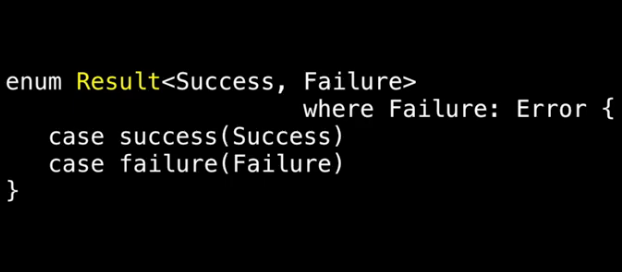One of the first things many programmers add to their Swift projects is a Result type. From Swift 5 onwards, Swift included an official Result type. In his talk at iOS Cong SG 2019, Daniel Steinberg explained why developers would need a Result type, how and when to use it, and what map and flatMap bring for Result.
Swift 5, released in March this year hosts a number of key features such as concurrency, generics, and memory management. If you want to learn and master Swift 5, you may like to go through Mastering Swift 5, a book by Packt Publishing. Inside this book, you’ll find the key features of Swift 5 easily explained with complete sets of examples.
Handle errors in Swift 5 easily with Result type
Result type gives a simple clear way of handling errors in complex code such as asynchronous APIs. Daniel describes the Result type as a hybrid of optionals and errors. He says, “We’ve used it like optionals but we’ve got the power of errors we know what went wrong and we can pull that error out at any time that we need it. The idea was we have one return type whether we succeeded or failed. We get a record of our first error and we are able to keep going if there are no errors.”
In Swift 5, Swift’s Result type is implemented as an enum that has two cases: success and failure. Both are implemented using generics so they can have an associated value of your choosing, but failure must be something that conforms to Swift’s Error type. Due to the addition of Standard Library, the Error protocol now conforms to itself and makes working with errors easier.

Image taken from Daniel’s presentation
Result type has four other methods namely map(), flatMap(), mapError(), and flatMapError(). These methods enables us to do many other kinds of transformations using inline closures and functions.
The map() method looks inside the Result, and transforms the success value into a different kind of value using a closure specified. However, if it finds failure instead, it just uses that directly and ignores the transformation. Basically, it enables the automatic transformation of a value (error) through a closure, but only in case of success (failure), otherwise, the Result is left unmodified.
flatMap() returns a new result, mapping any success value using the given transformation and unwrapping the produced result. Daniel says, “If I need recursion I’m often reaching for flat map.” Daniel adds, “Things that can’t fail use map() and things that can fail use flatmap().”
mapError(_:) returns a new result, mapping any failure value using the given transformation and flatMapError(_:) returns a new result, mapping any failure value using the given transformation and unwrapping the produced result. flatMap() (flatMapError()) is useful when you want to transform your value (error) using a closure that returns itself a Result to handle the case when the transformation fails.
Using a Result type can be a great way to reduce ambiguity when dealing with values and results of asynchronous operations. By adding convenience APIs using extensions we can also reduce boilerplate and make it easier to perform common operations when working with results, all while retaining full type safety. You can watch Daniel Steinberg’s full video on YouTube where he explains Result Type with detailed code examples and points out common mistakes.
If you want to learn more about all the new features of Swift 5 programming language then check out our book, Mastering Swift 5 by Jon Hoffman.










![How to create sales analysis app in Qlik Sense using DAR method [Tutorial] Financial and Technical Data Analysis Graph Showing Search Findings](https://hub.packtpub.com/wp-content/uploads/2018/08/iStock-877278574-218x150.jpg)


